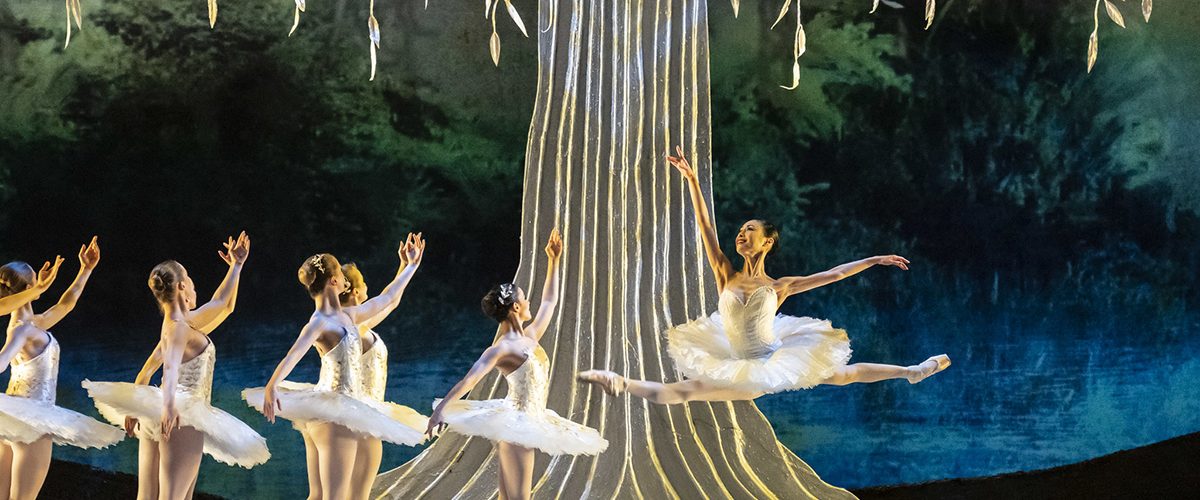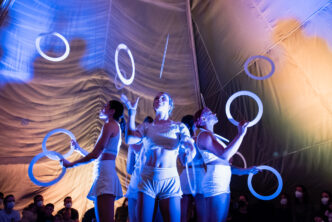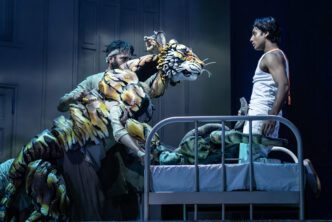Carlos Acosta’s energetic, vibrant production of this classic ballet is guaranteed to make you smile, writes Georgina Wells
In his programme notes, Carlos Acosta calls Don Quixote ‘the sunshine ballet,’ and certainly Birmingham Royal Ballet are bringing some much-needed sunny escapism to audiences on this tour. Before the performance gets under way, the Royal Ballet Sinfonia play the Ukrainian national anthem – a powerful and moving gesture that brings the Lowry audience to its feet and is bookended by applause.
This production has everything you would expect from a ballet set in Spain: posturing matadors, dramatic ports de bras, flamenco guitar played live onstage, swirling capes and skirts, tambourines, castanets and fans. Ludwig Minkus’ score is a bright, sparkling accompaniment to the action – and sounds excellent even from a scaled-down orchestra (the result of rising COVID cases in the company).
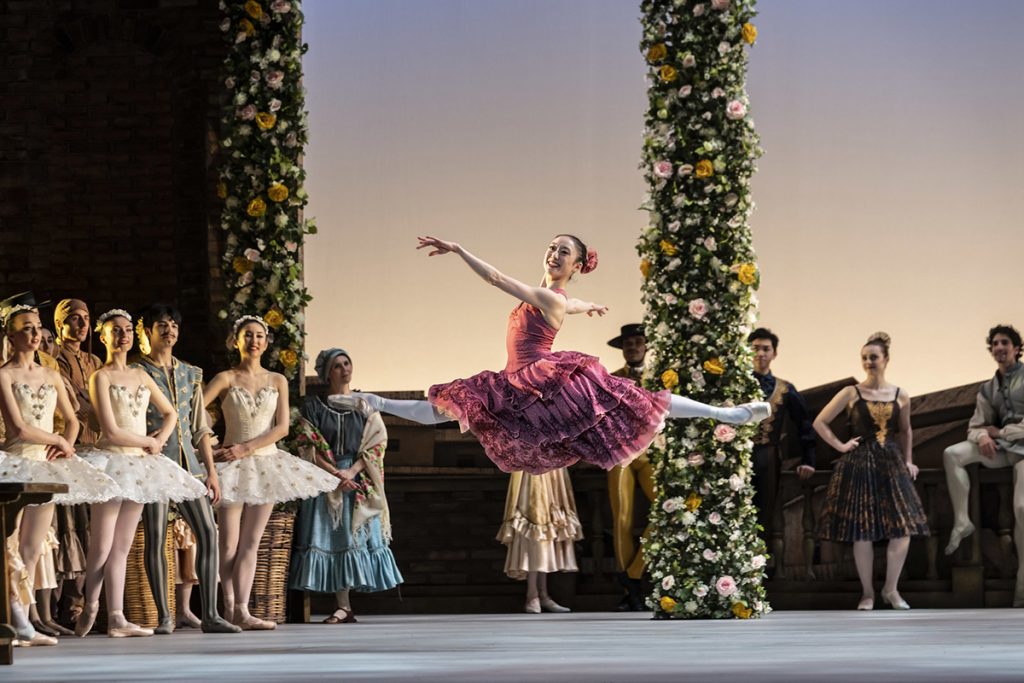
The first act, set in a town square, is a riot of colour, character comedy and furiously fast-paced dancing; in spite of the reduction in performer numbers – again, due to COVID – it still feels like a bustling plaza. There’s the comically foppish, yellow-suited and blue-wigged Gamache (Rory Mackay); the slapstick antics of greedy Sancho Panza (Laura Day); the macho Espada (danced with commanding presence by Lachlan Monaghan); and of course the lovers Kitri and Basilio.
Miki Mizutani takes a little time to warm up to the role, possibly due to an early fall; she doesn’t seem fully comfortable in the shoes of the sassy, playful Kitri, though she executes the famous castanet solo with sharpness. It’s in the Act II Garden of the Dryads, as Don Quixote’s fantasy Dulcinea, where she really shines, performing the more classical choreography with confidence, grace and poise.
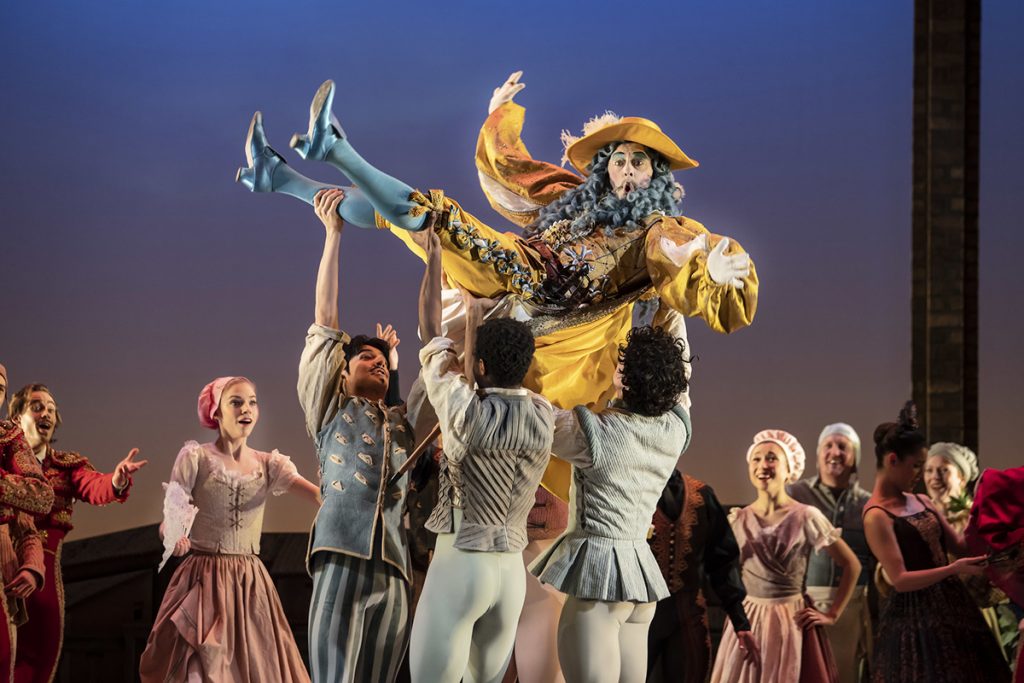
Acosta has reworked the production that he created for the Royal Ballet in 2013, and it is in this classical interlude that you can see some of the most notable changes. Instead of a sea of pastel colours, the garden has a much more wintry aesthetic – the ballerina dryads appear in sparkling white tutus, dancing around a silver weeping willow centrepiece, and the sprightly Cupid is reinvented as a male role (performed with great showmanship by Tzu-Chao Chu).
Tim Hatley’s set designs are noticeably different from the Royal Ballet staging, and much more practical for a touring production – gone are the famous sliding houses, and in their place is a simple colonnade to evoke the town square. The windmill that Don Quixote tilts at in Act II is projected animation, allowing the sails to be transformed into creepy, flailing monster limbs and back in the blink of an eye.
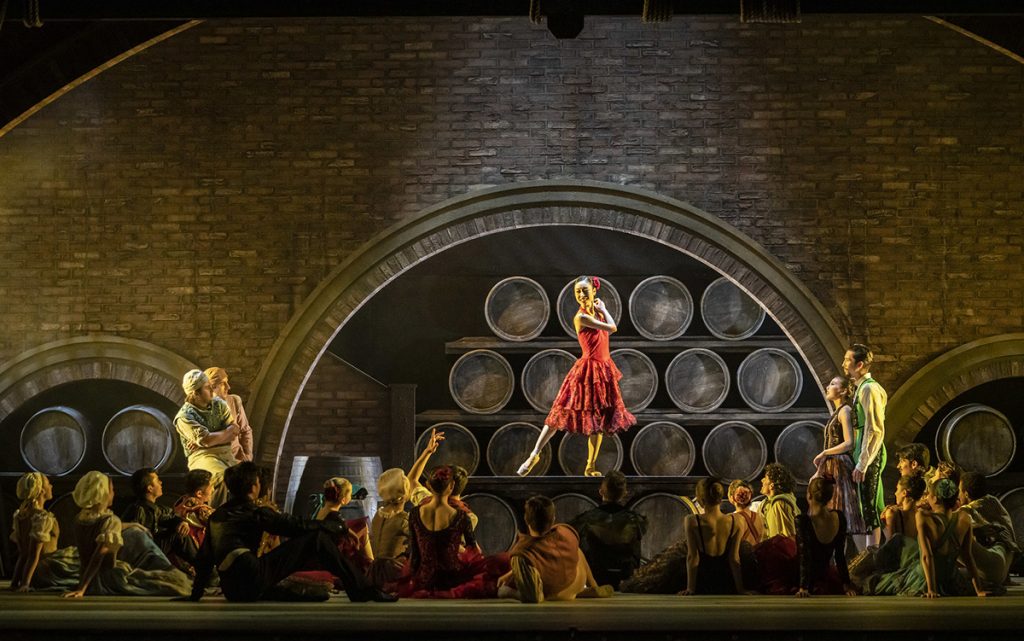
After a rather wobbly duet in Act II, it’s a relief to see Mizutani and Mathias Dingman back on form in the famous – and challenging – Act III wedding pas de deux, the ballet’s crowning glory; their adagio is controlled and clean, understated even. Dingman excels in Basilio’s flashy solo, turning and leaping with impressive power, and he inhabits the character with suitable swagger throughout the ballet.
This production is Acosta’s energetic, vibrant stamp on a classic, guaranteed to make audiences laugh, smile and leave the theatre humming its tunes – a little bit of sunshine to carry with us into an increasingly dark and worrying world.
Birmingham Royal Ballet‘s Don Quixote is at The Lowry from 2-5 March 2022.

